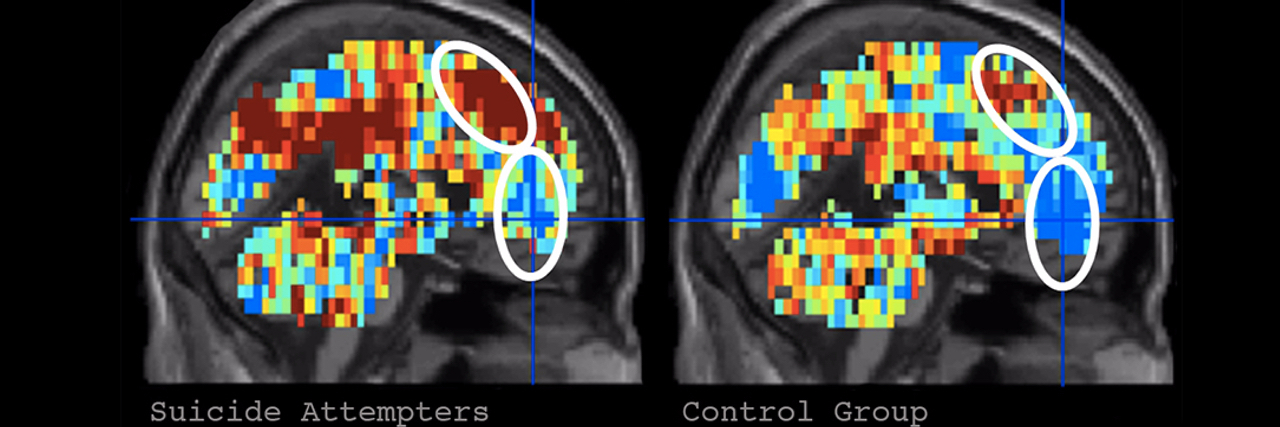Researchers from Carnegie Mellon University and the University of Pittsburgh say they may have found a new way to identify if someone is experiencing suicidal thoughts.
In a study published in Nature Human Behavior, researchers used fMRI brain imaging and a machine-learning method they developed years ago to find “neural signatures” of specific thoughts and applied it to people experiencing suicidal ideation. Researchers presented 17 individuals experiencing suicidal ideation with specific words and monitored how their brains responded. Their results were then compared to the results of a control group of 17 mentally “healthy” individuals.
“We decided to see if we could use this method to see if the thoughts of people who are thinking about suicide are different — if they think differently about certain concepts,” Marcel Just, who co-authored the study, told The Mighty. “Things like ‘death’ and ‘funeral’ and ‘carefree.’ It’s life and death-related concepts. People with suicidal ideation think about them differently.”
Results of the study show that people thinking about suicide have different neural signatures. This difference, Just explained, has to do with the emotions people felt after being shown certain words.
The brain signature of these various concepts has an emotion component, and that emotion component is different in the people who think about suicide… To give you a specific example, people who think about suicide, when you ask them to think about death, that concept of death has more sadness and more shame associated with it than the case with the healthy controls.
Based on the brain scans, researchers were able to identify with 91 percent accuracy if a participant was in the suicidal tendency group or the control group. In addition, they applied the same approach to identify, with 94 percent accuracy, the nine participants from the suicidal ideation group who had previously attempted suicide.
In the U.S. alone, suicide is the 10th leading cause of death. Worldwide, one person dies by suicide every 40 seconds. According to Just, these findings could provide an additional way to assess psychiatric disorders. Making it a possibility that, in the future, in addition to seeing a psychiatrist and filling out mental health questionnaires, your doctor might order imaging to assess your brain activity and come up with a more accurate diagnosis.
Though additional research with a larger sample size is needed to replicate the results of the study, Just is hopeful about what this research could mean down the line.
“We haven’t yet shown that this predicts suicide attempts, which would be an incredibly useful thing,” Just said. “Right now what we can do is tell whether a person is thinking about suicide or not. But a next very important step would be to see if we can predict whether someone is going to make an attempt.”
If you or someone you know needs help, visit our suicide prevention resources page.
If you need support right now, call the National Suicide Prevention Lifeline at 1-800-273-8255 or text “START” to 741-741.

